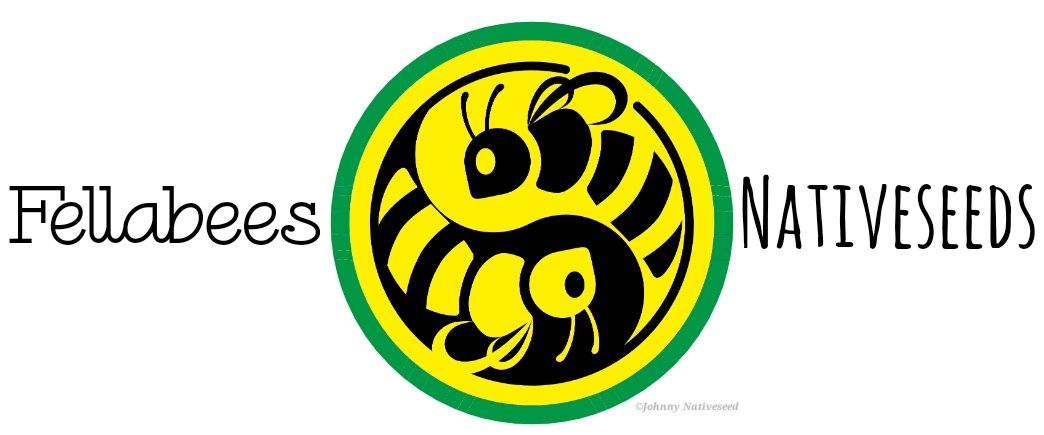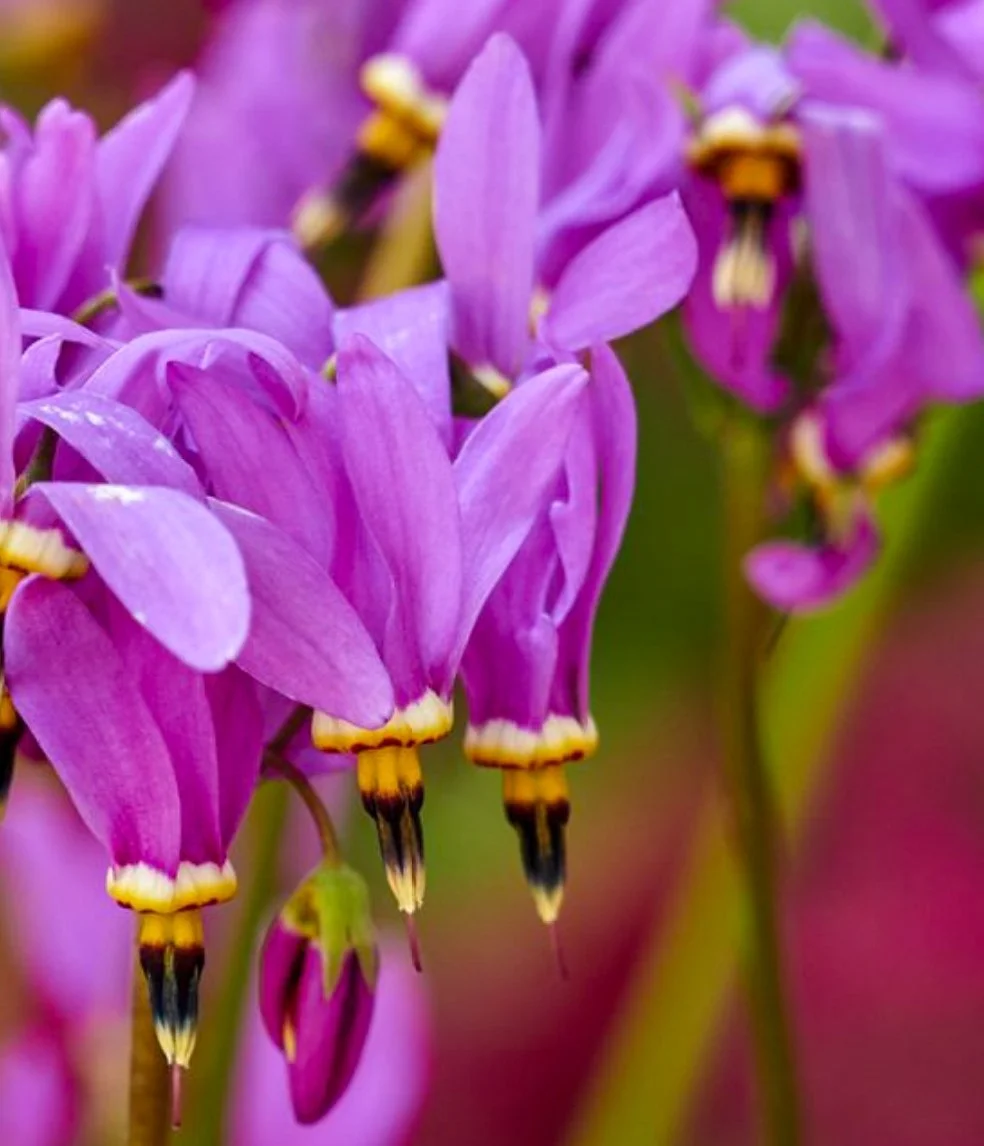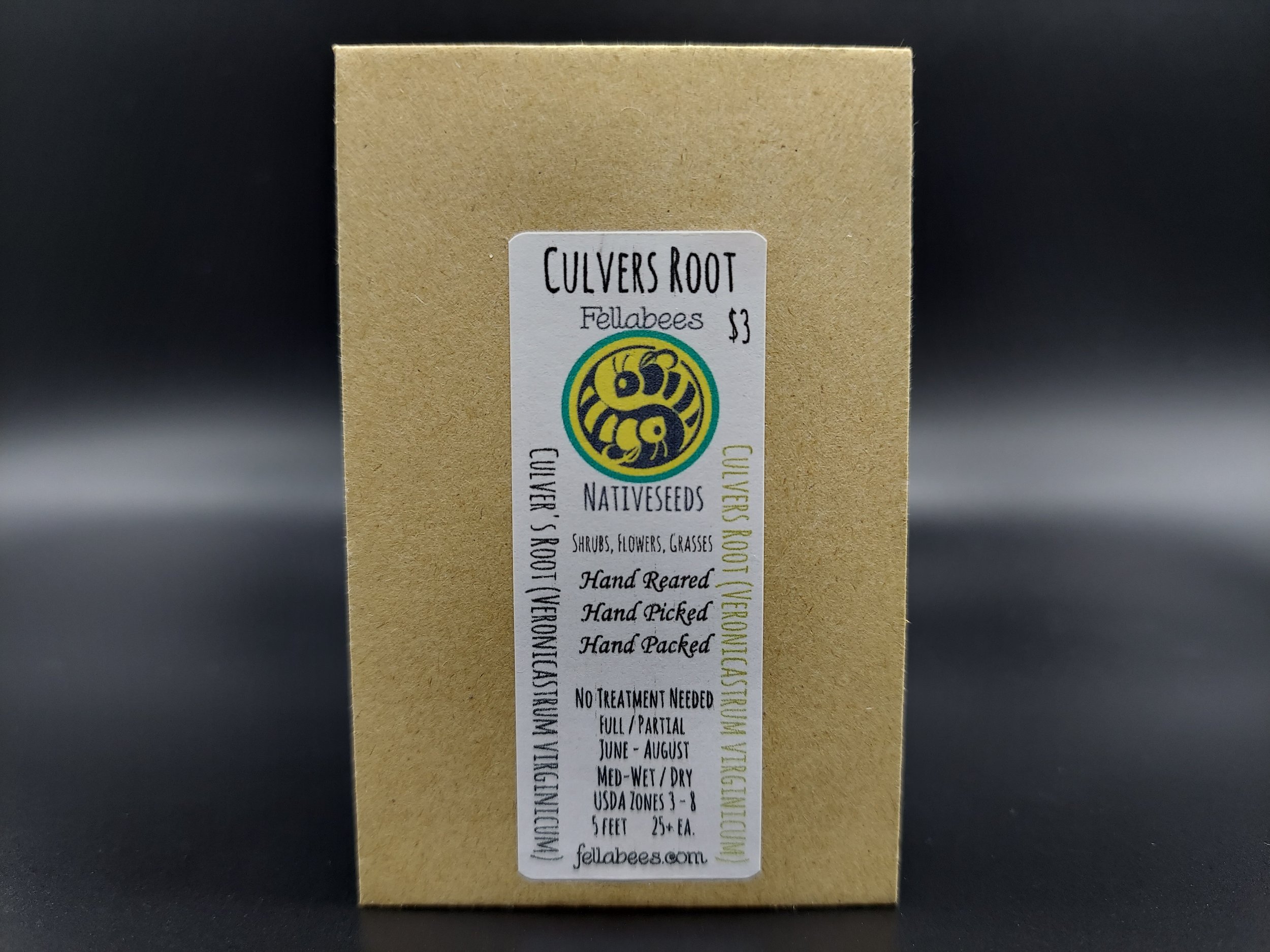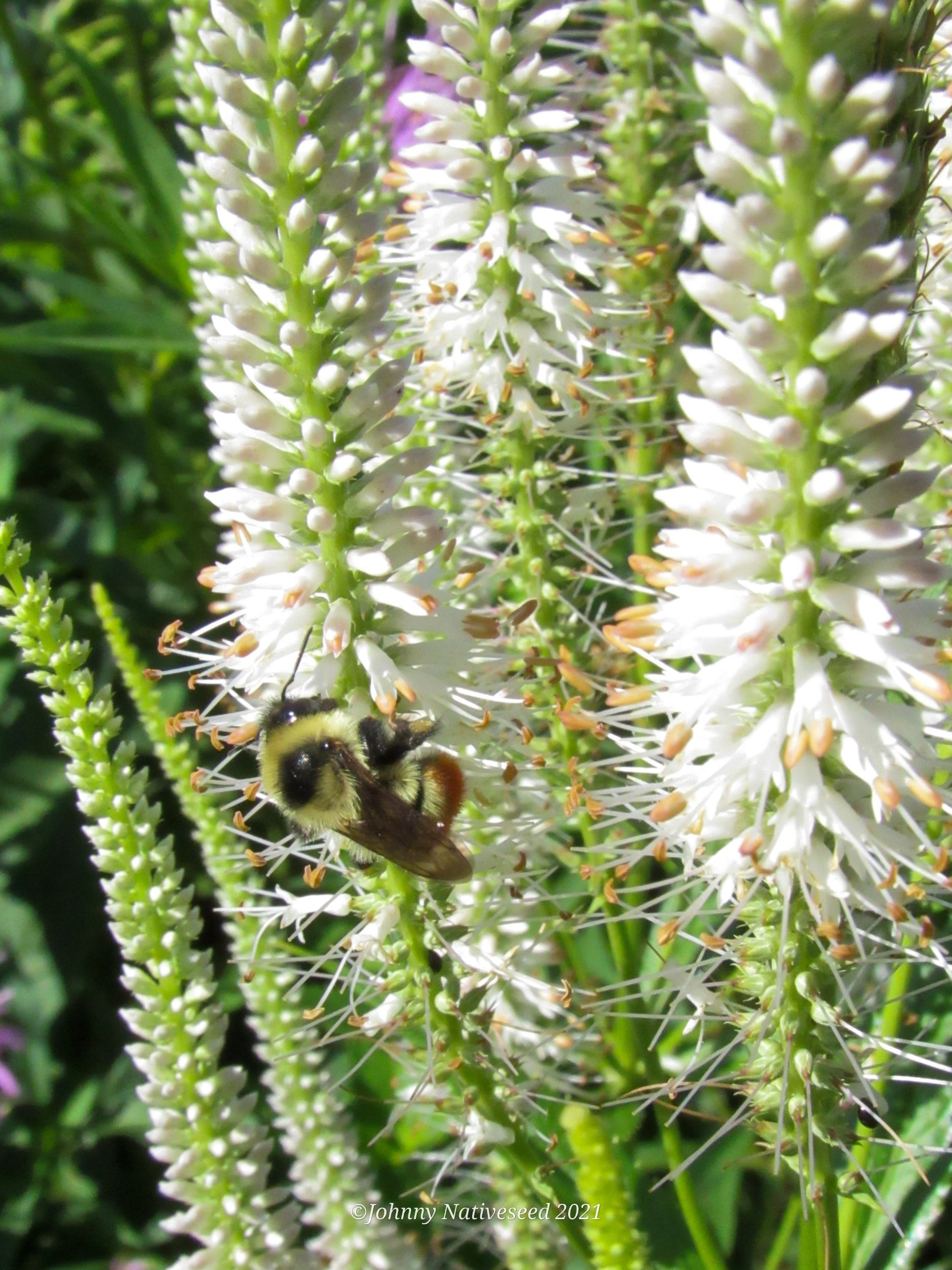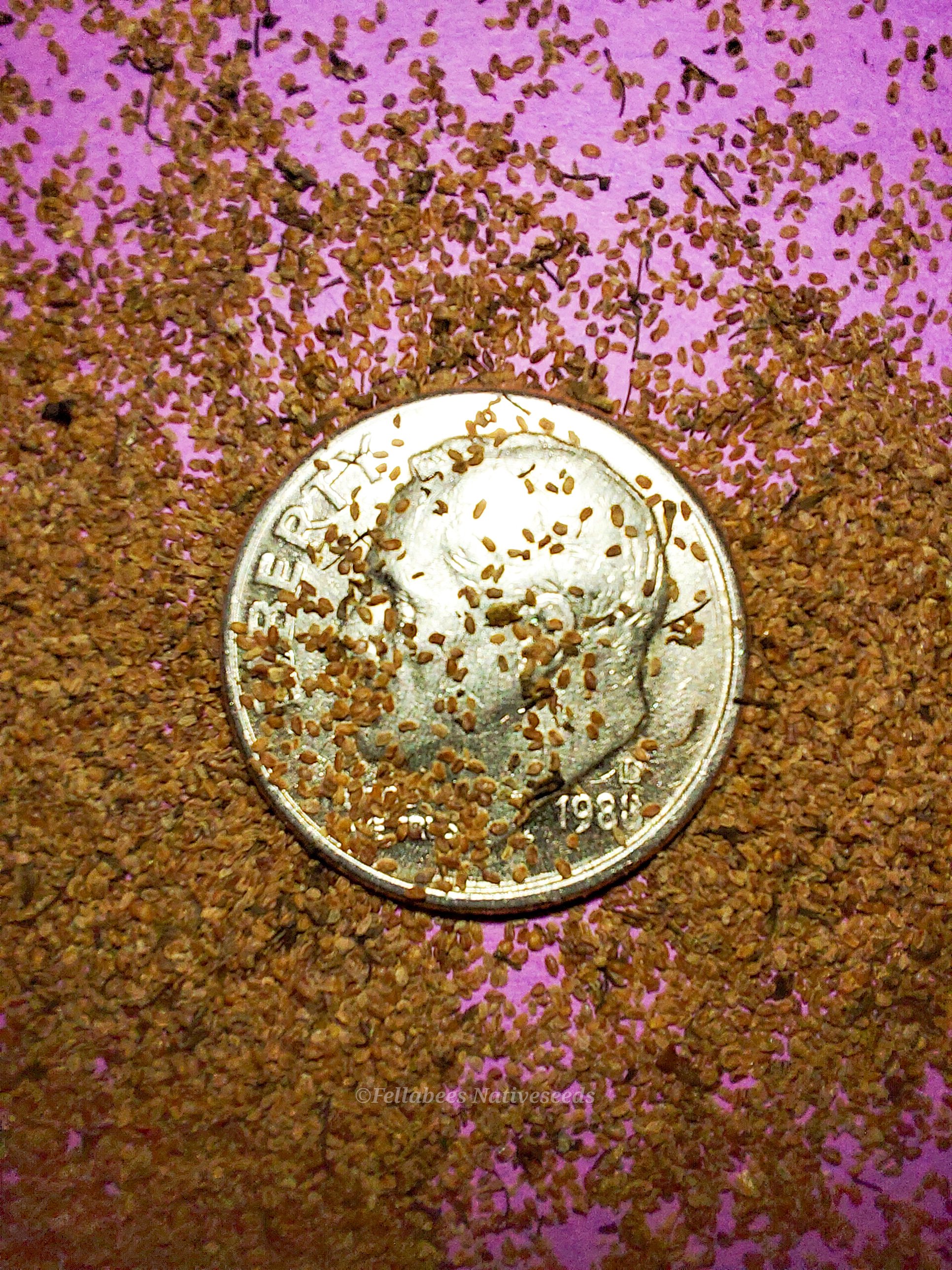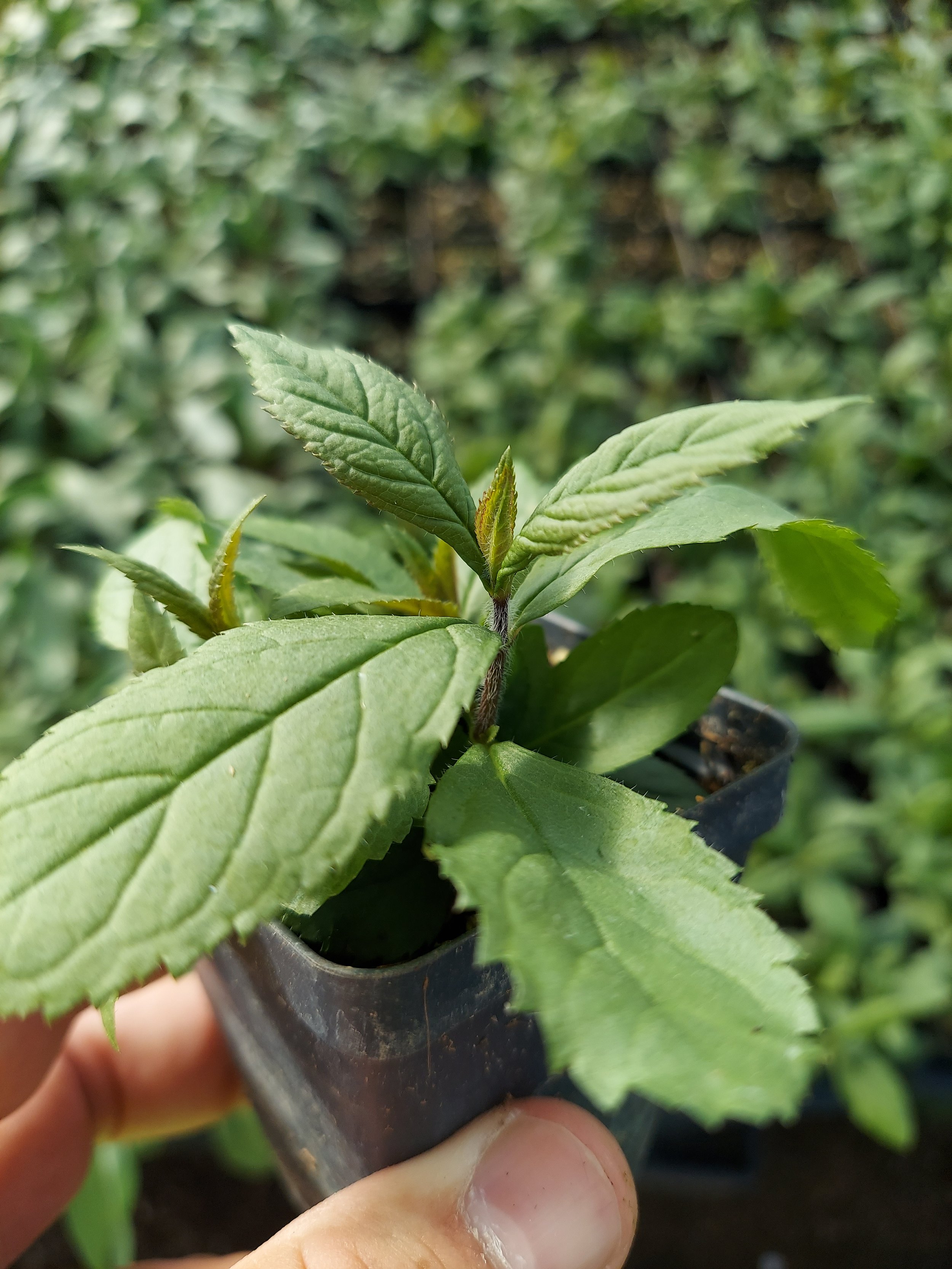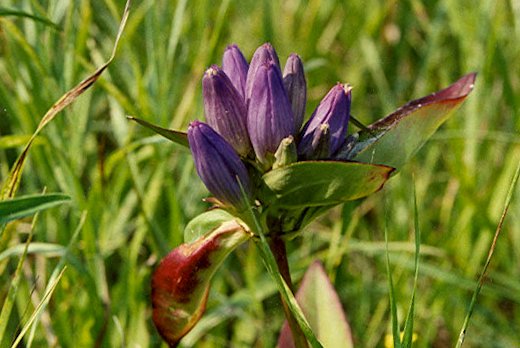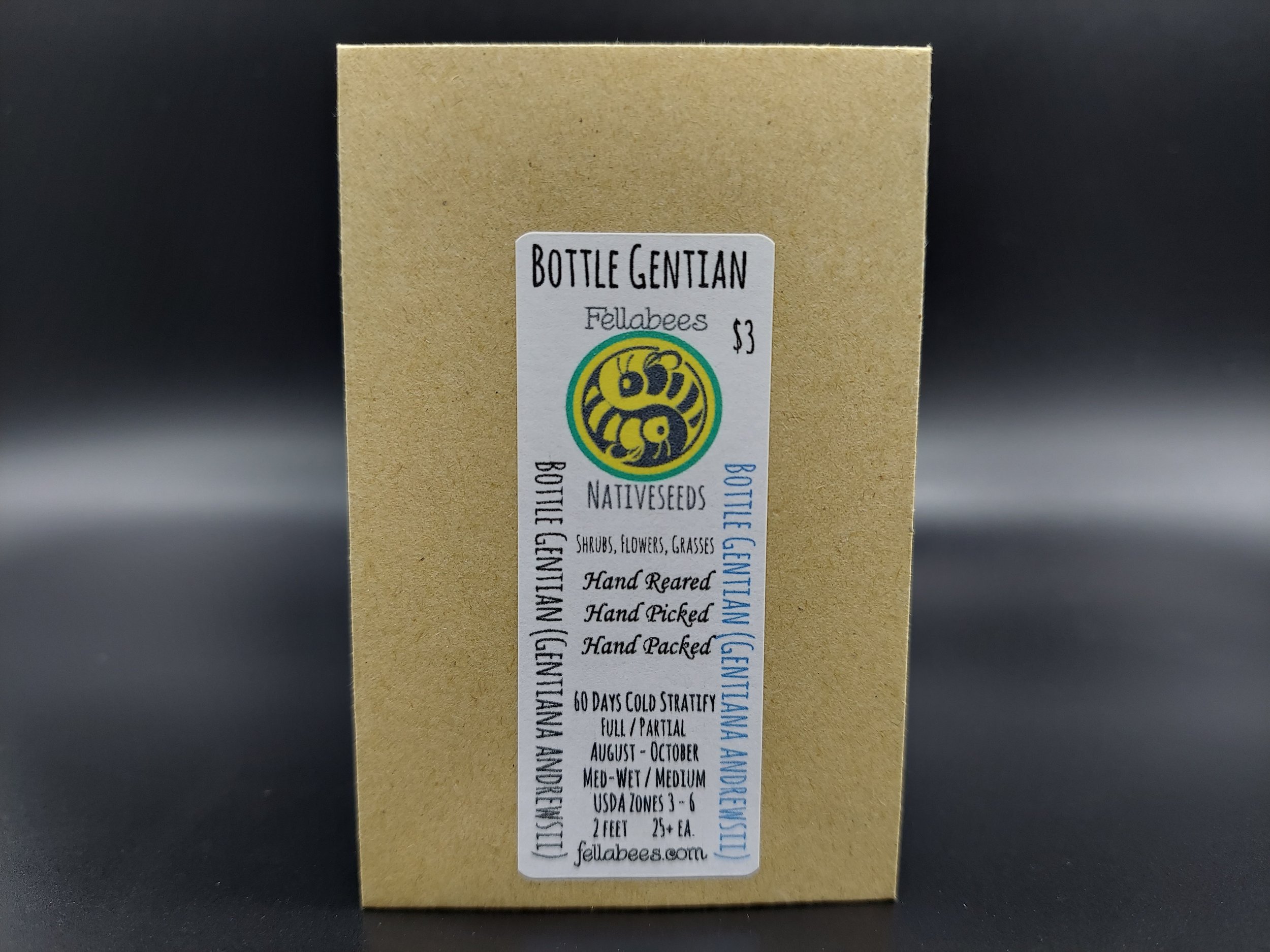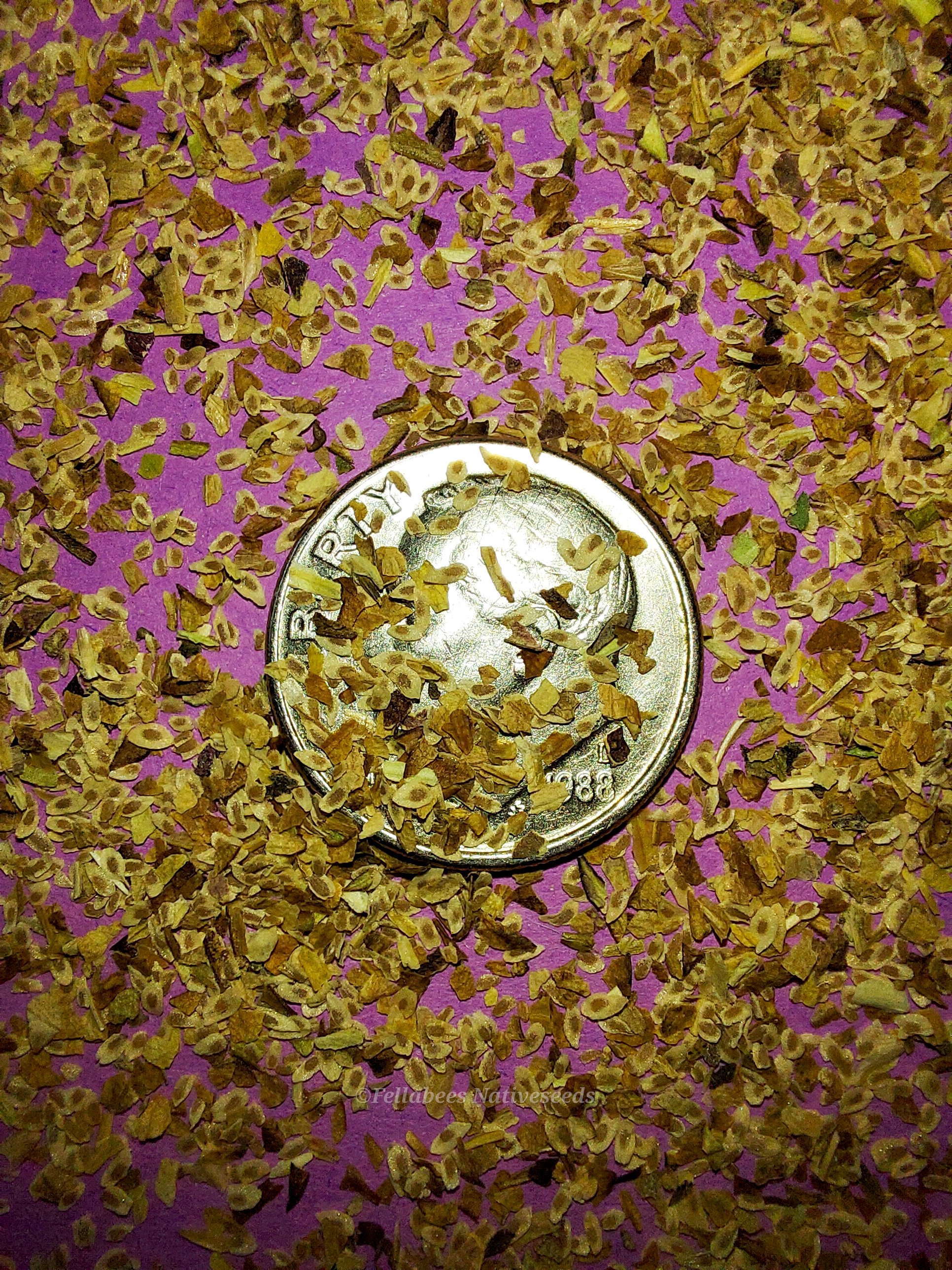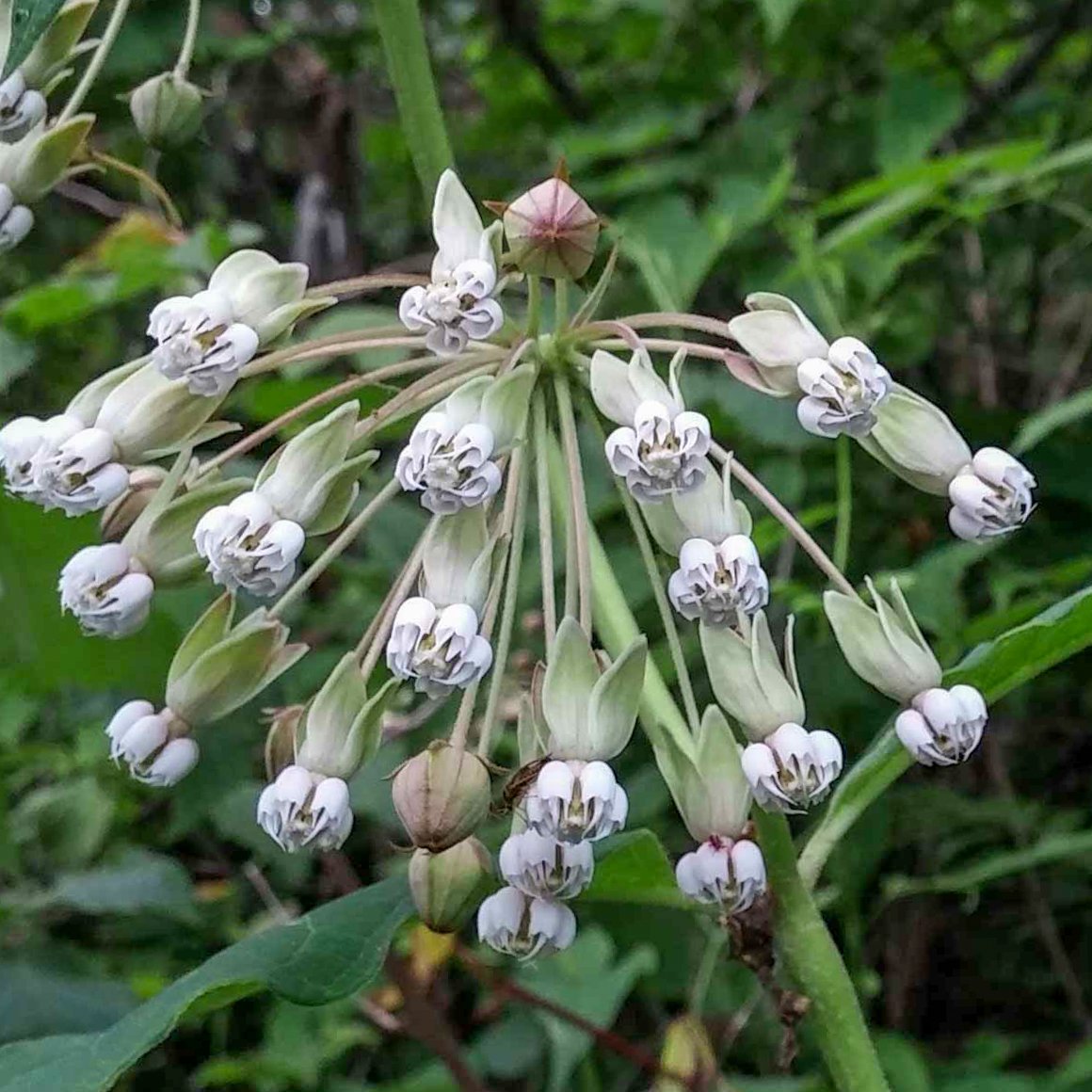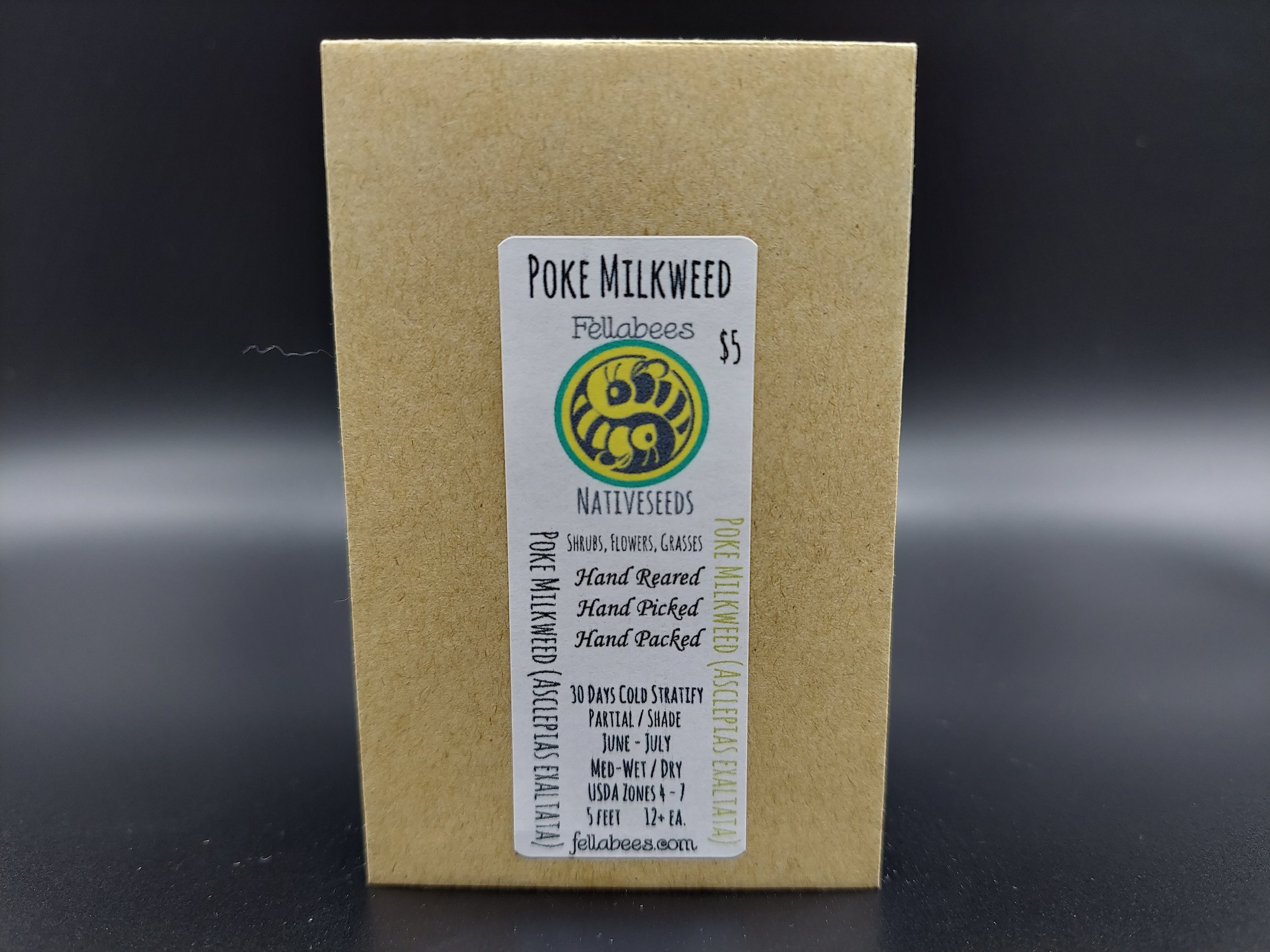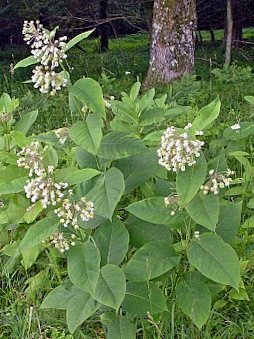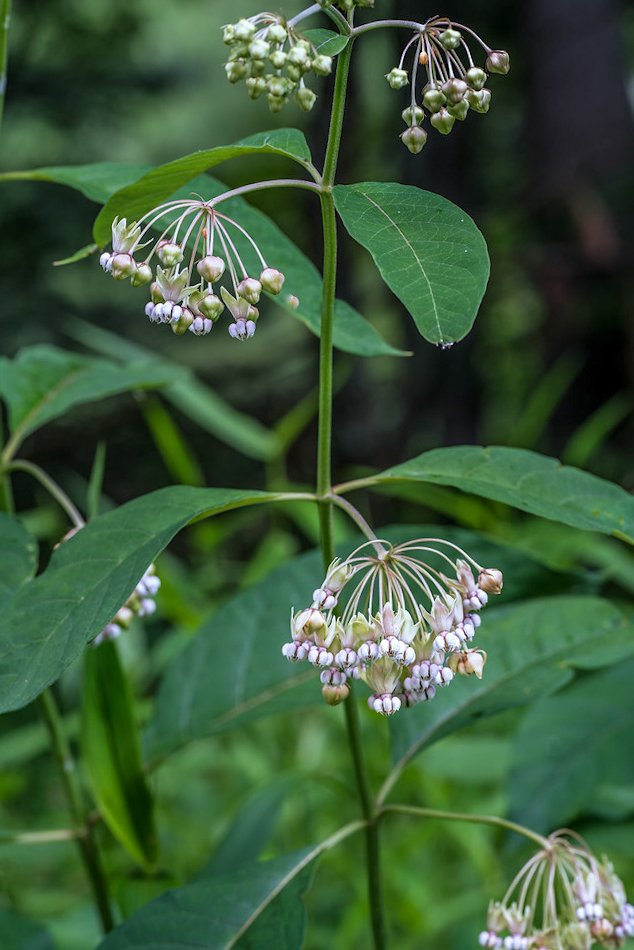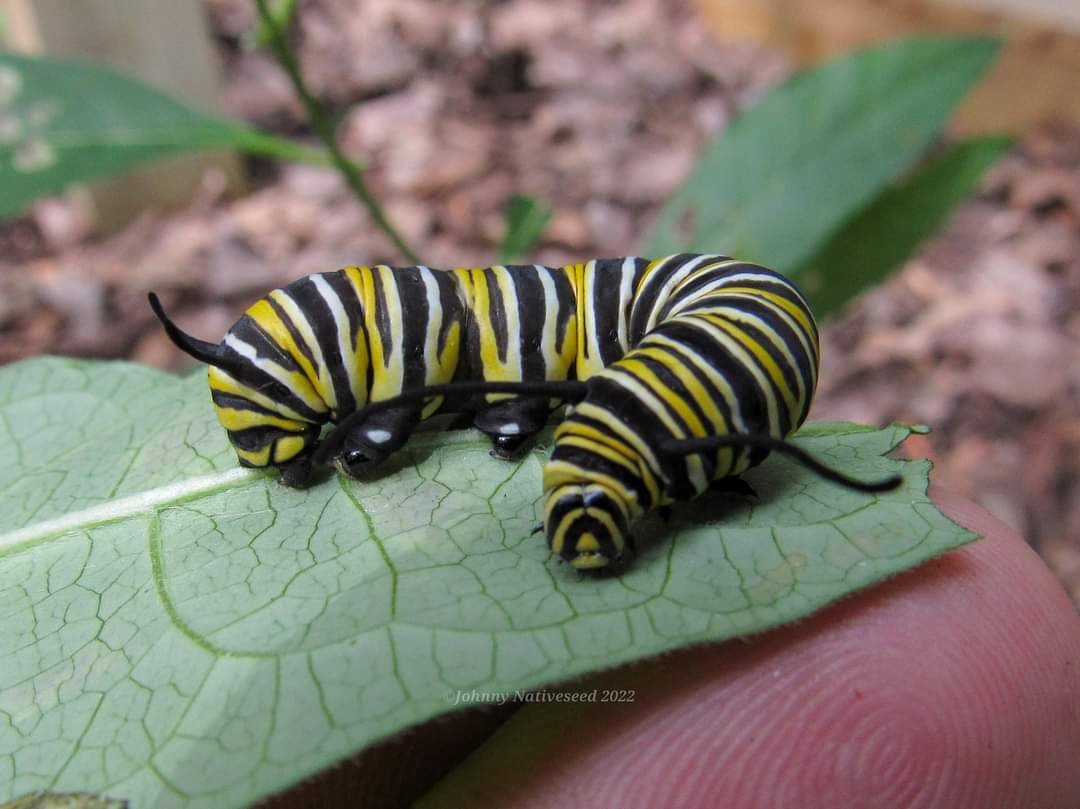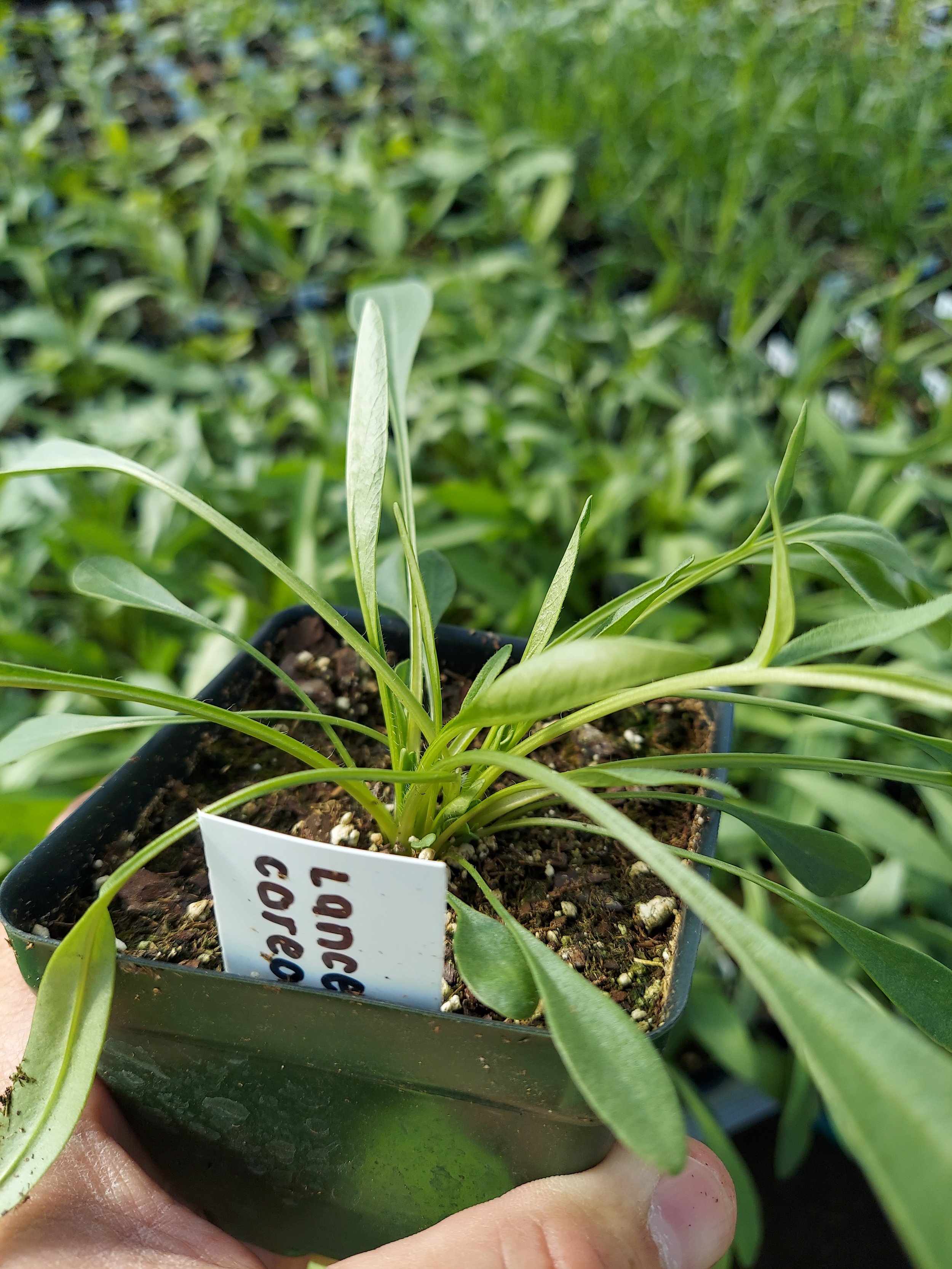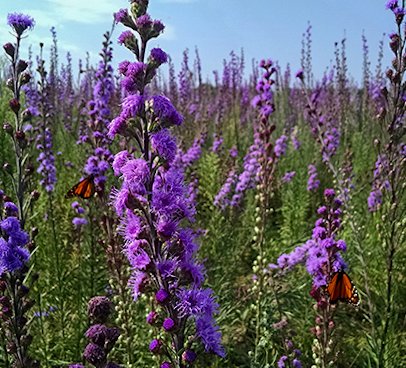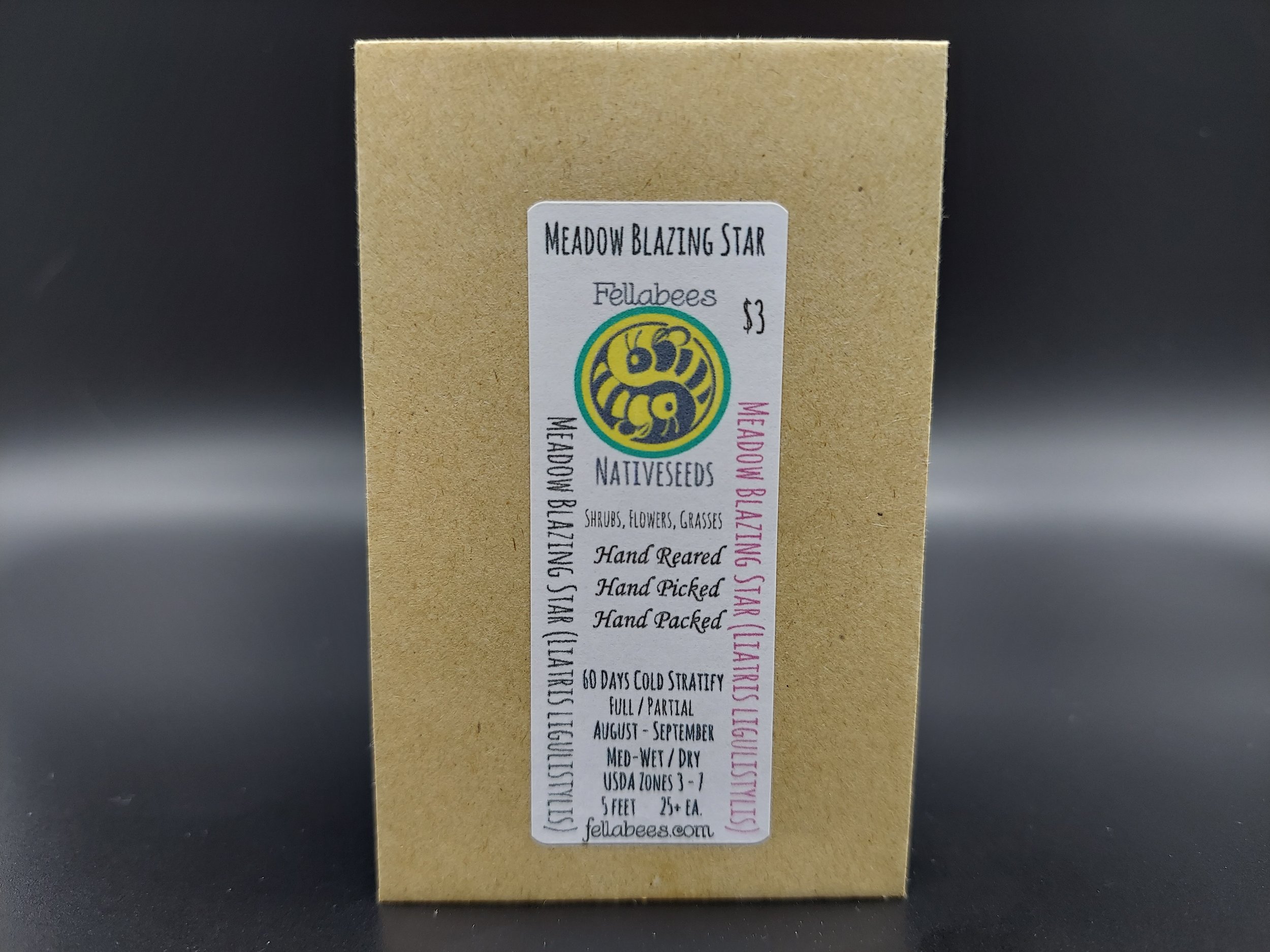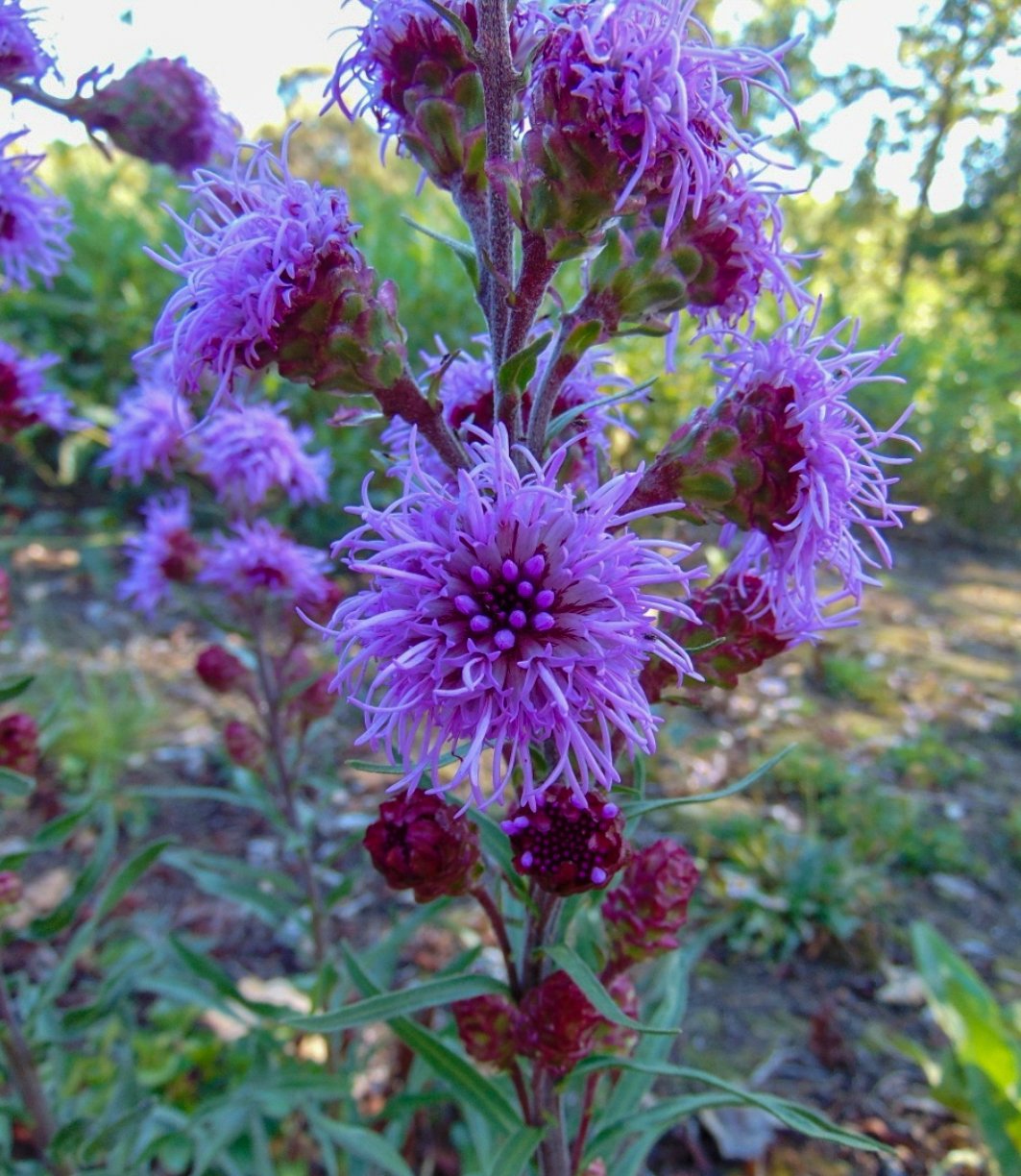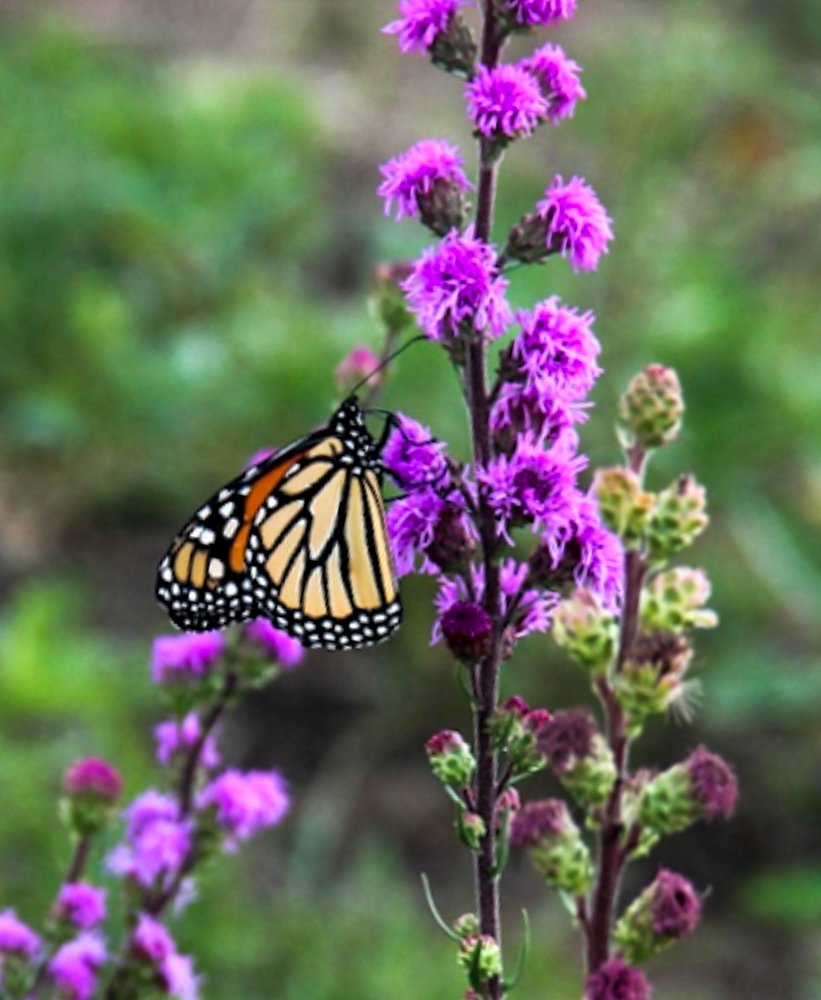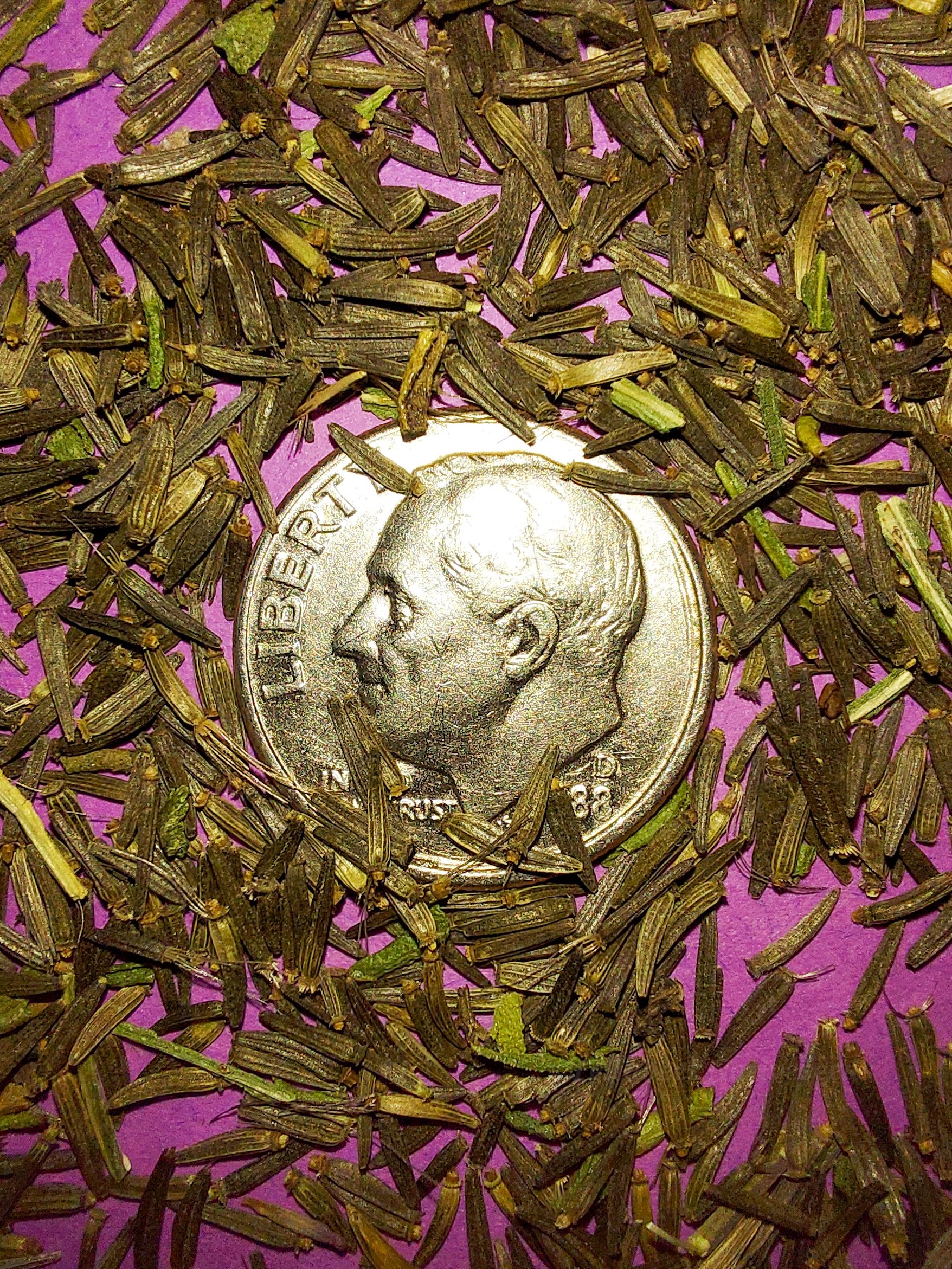 Image 1 of 6
Image 1 of 6

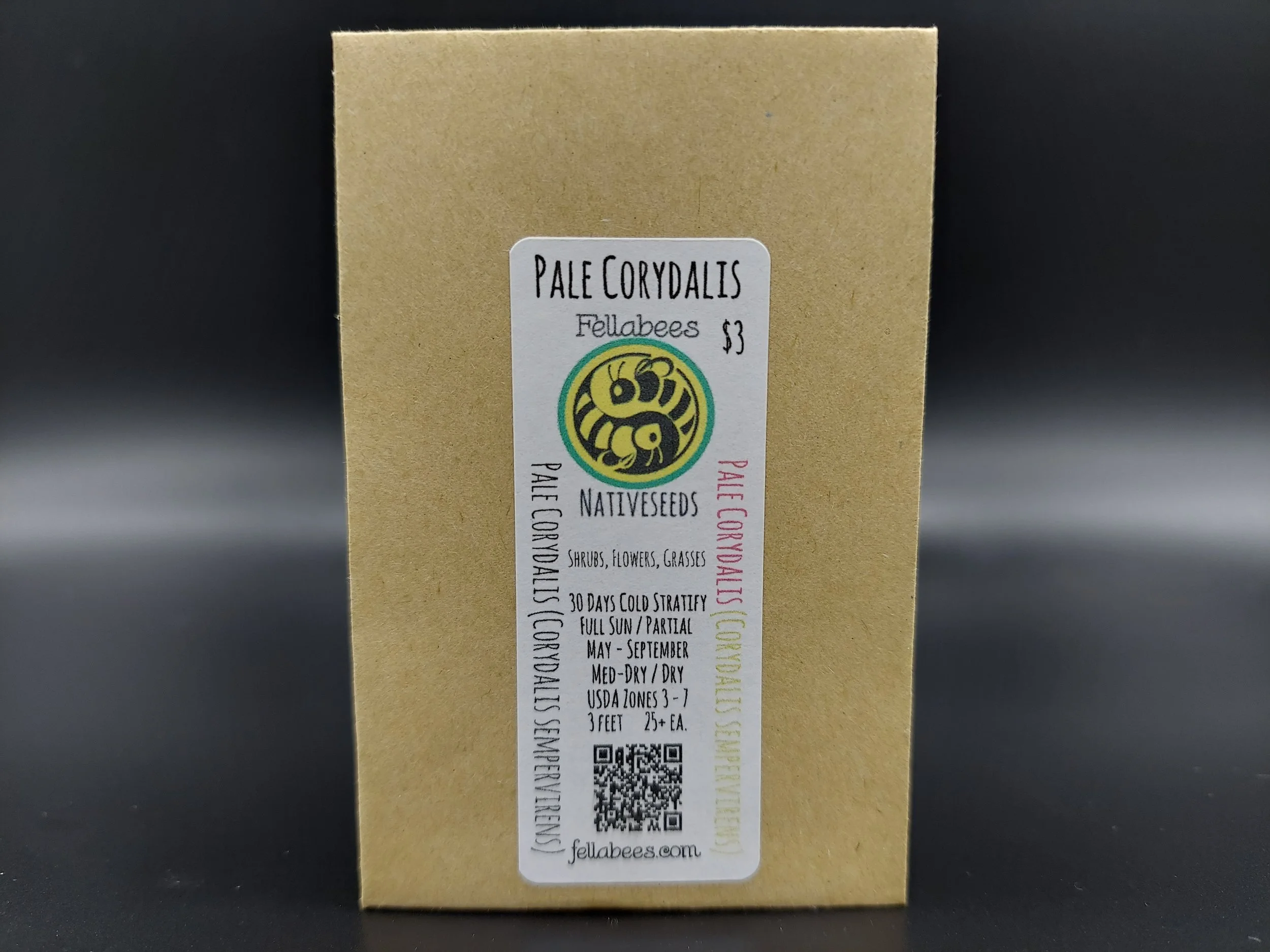 Image 2 of 6
Image 2 of 6

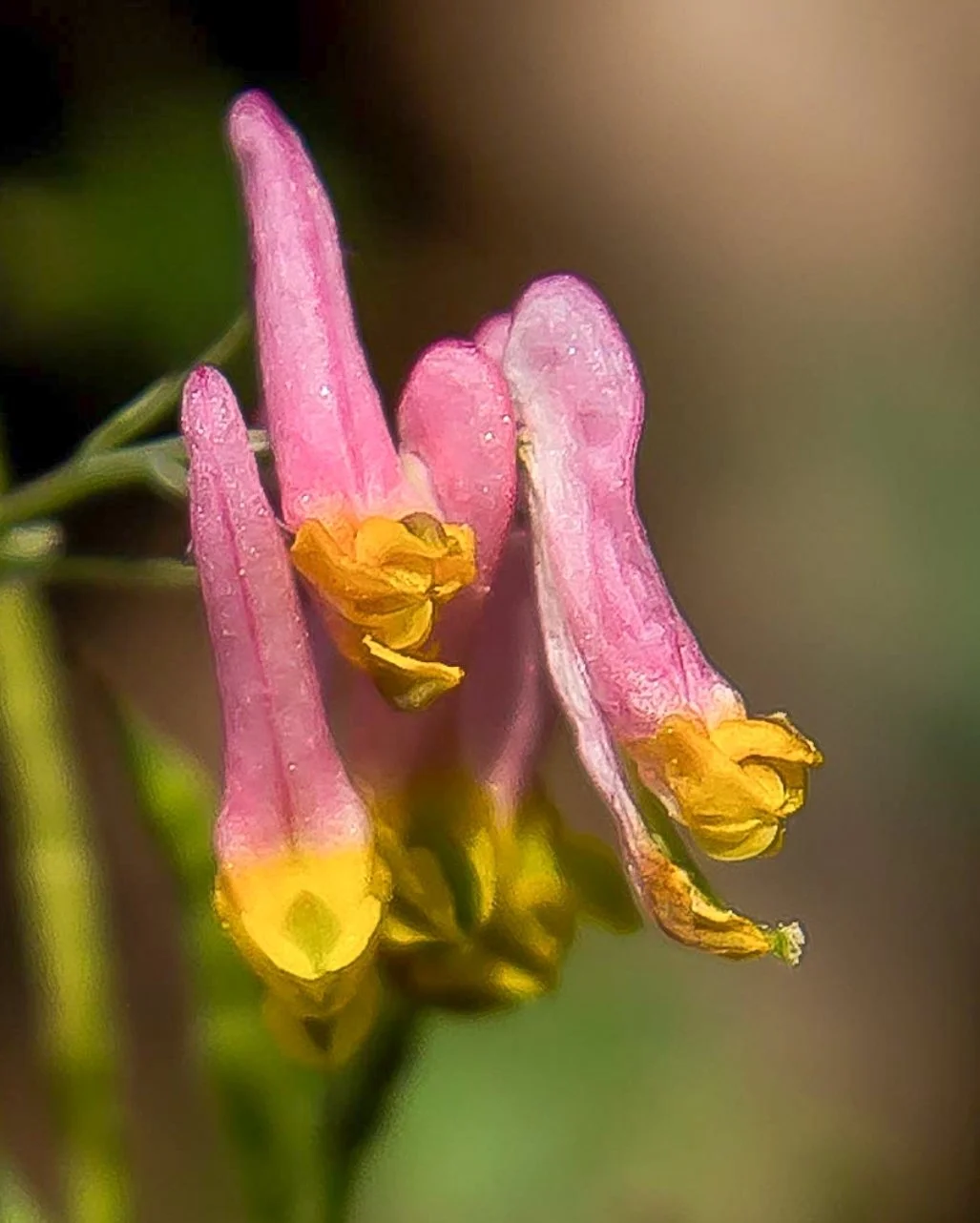 Image 3 of 6
Image 3 of 6

 Image 4 of 6
Image 4 of 6

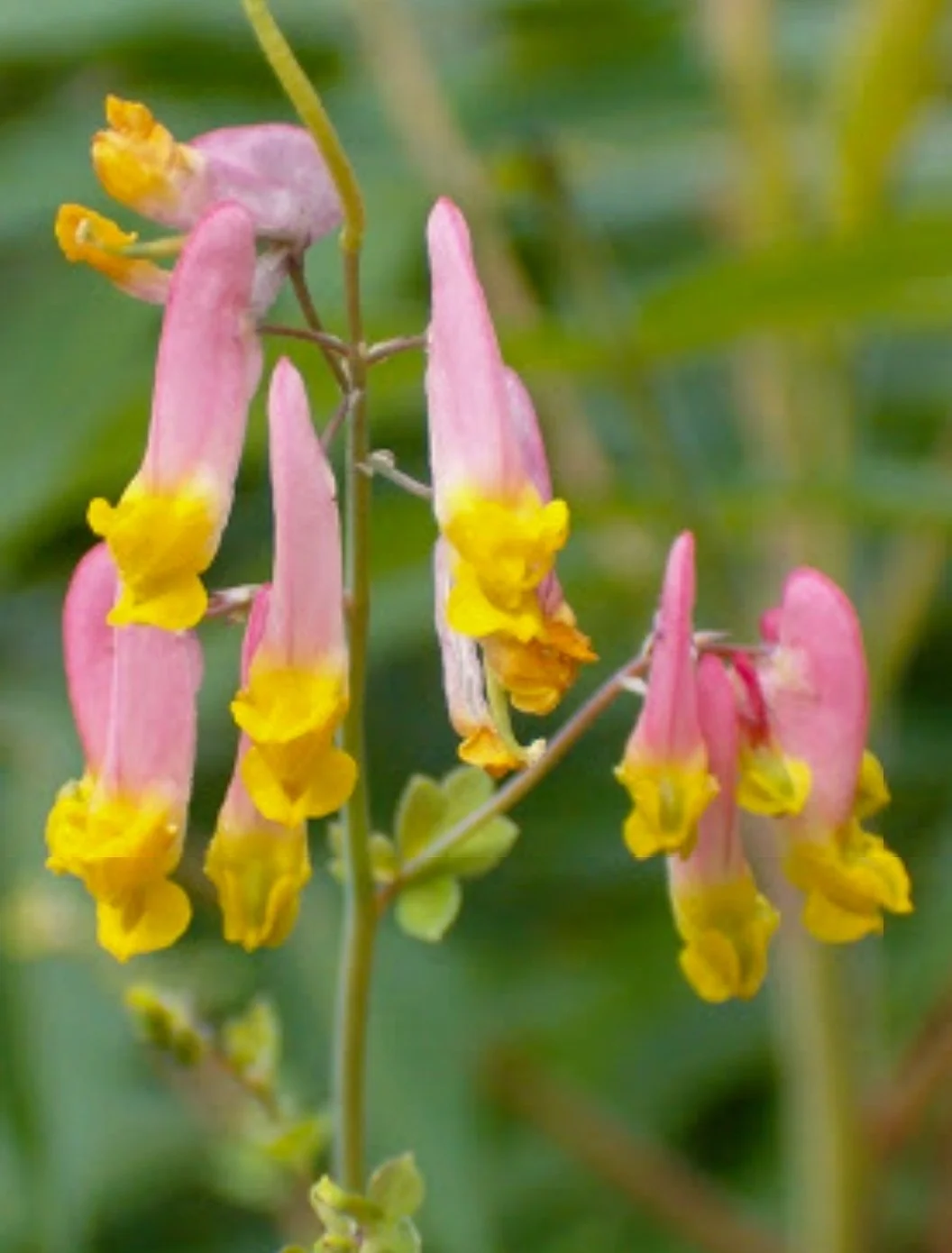 Image 5 of 6
Image 5 of 6

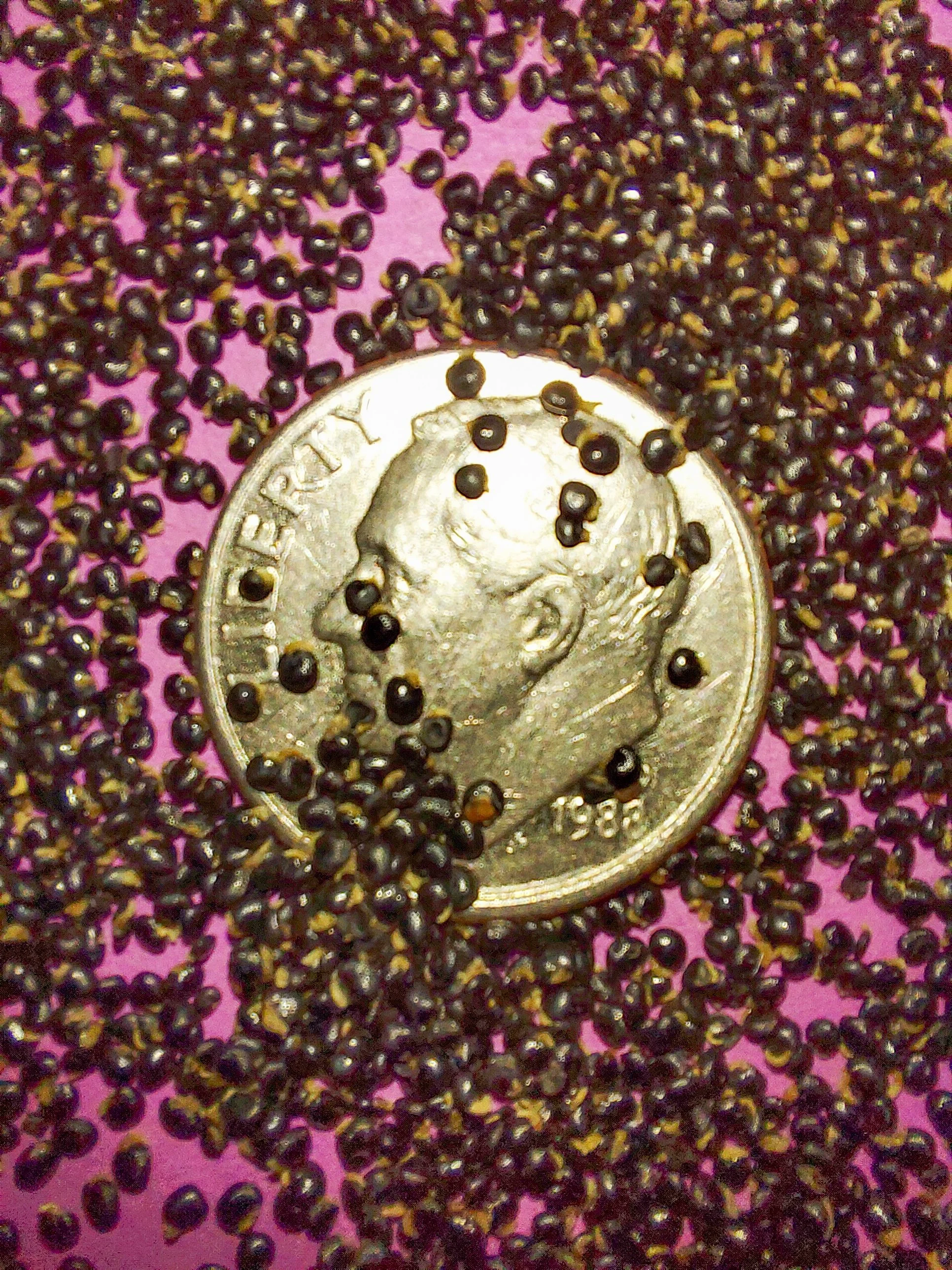 Image 6 of 6
Image 6 of 6







Pale Corydalis (Corydalis sempervirens)
Pale Corydalis (Corydalis sempervirens)
Corydalis sempervirens, also called Pale Corydalis, Harlequin Corydalis, Rock Harlequin, or Pink Corydalis, is a biennial plant. It grows about 3 feet tall and 1.5 feet wide, fitting well in gardens or natural areas. Its soft blue-green leaves look like delicate fern fronds, adding texture even without flowers. In its second year, it blooms pale pink, tubular flowers with yellow tips from late spring to fall, offering color and supporting pollinators.
This plant is native to rocky woods and disturbed areas in northern North America, especially around the Great Lakes, New England, and the Blue Ridge Mountains. It grows well on rocky cliffs, granite domes, and narrow cracks, preferring dry, acidic, well-drained soil. It thrives in places with cold winters and cool summers, making it ideal for gardens in similar climates.
If its appearance feels familiar, that’s because it is a member of the Fumitory family, closely related to other plants such as the native Dutchman's Breeches and the non-native Bleeding Heart. Due to its declining populations and habitat challenges, it is currently listed as endangered or threatened in several states, as detailed in the “States” list below.
Corydalis sempervirens is easy to grow and can be successfully propagated from seeds or by division. It thrives best in full sun to part shade conditions and is well-adapted to tolerate poor, dry, and gravelly soils. This resilient plant is virtually free from disease and pests, making it an exceptionally low-maintenance addition to a variety of garden settings.
The delicate and charming flowers of Corydalis sempervirens attract a diverse array of pollinators, including bumblebees, butterflies, and numerous other beneficial insects, playing a crucial role in supporting and enhancing local biodiversity. In addition to its ecological benefits, this resilient and hardy plant has been widely recognized for its valuable potential in the rehabilitation and restoration of disturbed and degraded sites, owing to its exceptional ability to establish and thrive in a variety of challenging soil types and harsh environmental conditions.
Plant Details:
USDA Zones: 3-7
Germination Needs: Needs 30 Days of Cold-Moist Stratification
Life Cycle: Annual / Biennial
Sun Exposure: Full to Partial
Soil Moisture: Medium-Dry, Dry
Plant Spacing: 6 - 12 inches
Height: 3 feet
Bloom time: May, June, July, August, September
Bloom Color: Pink
Advantages:
Pollinator Favorite: butterflies, moths, bees, wasps, beetles
Bird Favorite: seeds, insects, fruit, nectar, nesting, perches.
Deer Resistant: Yes
Native to: Wisconsin, Minnesota, Iowa, Illinois, Indiana, Michigan, Ohio, Pennsylvania, New York, Vermont, New Hampshire, Maine, Massachusetts, Rhode Island, Connecticut, Maryland, New Jersey, West Virginia, Virginia, Kentucky, Tennessee, North Carolina, South Carolina, Georgia, North Dakota and Montana.
This species is considered present but rare in several counties of the states of Montana, North Dakota, Iowa, Illinois, Indiana, Ohio, Rhode Island, Maryland, Kentucky, Tennessee, South Carolina, and Georgia.
Seed Count: 25+
.
.
Packet quantities:
We pride ourselves on ethical, hands on, ecological management, using no mechanical or chemical methods whatsoever.
All of our native seed is hand reared, hand-picked, and hand packed from native prairies under our exclusive management, never breaking chain of custody from the field until it is sent to you. Each packet is hand prepared for shipment by us, directly.
Small seed species will contain greater than 20-25 seed
Large seed species will contain greater than 10-15 seed
All packets are individually marked at the bottom of the front label with expected count, however most if not all packets will have many more than the minimum count by default.
It is our mission to spread the wealth of native plant and pollinator ecological sustainability and educate back yard gardeners as well as corporate and government entities in how to germinate, grow, and benefit from native synergies.
Thank you for your support, it is because of you, that we can grow together to do, what we do. 🐛🦋🐝🐞🌾🌱🌼🧡
Pale Corydalis (Corydalis sempervirens)
Corydalis sempervirens, also called Pale Corydalis, Harlequin Corydalis, Rock Harlequin, or Pink Corydalis, is a biennial plant. It grows about 3 feet tall and 1.5 feet wide, fitting well in gardens or natural areas. Its soft blue-green leaves look like delicate fern fronds, adding texture even without flowers. In its second year, it blooms pale pink, tubular flowers with yellow tips from late spring to fall, offering color and supporting pollinators.
This plant is native to rocky woods and disturbed areas in northern North America, especially around the Great Lakes, New England, and the Blue Ridge Mountains. It grows well on rocky cliffs, granite domes, and narrow cracks, preferring dry, acidic, well-drained soil. It thrives in places with cold winters and cool summers, making it ideal for gardens in similar climates.
If its appearance feels familiar, that’s because it is a member of the Fumitory family, closely related to other plants such as the native Dutchman's Breeches and the non-native Bleeding Heart. Due to its declining populations and habitat challenges, it is currently listed as endangered or threatened in several states, as detailed in the “States” list below.
Corydalis sempervirens is easy to grow and can be successfully propagated from seeds or by division. It thrives best in full sun to part shade conditions and is well-adapted to tolerate poor, dry, and gravelly soils. This resilient plant is virtually free from disease and pests, making it an exceptionally low-maintenance addition to a variety of garden settings.
The delicate and charming flowers of Corydalis sempervirens attract a diverse array of pollinators, including bumblebees, butterflies, and numerous other beneficial insects, playing a crucial role in supporting and enhancing local biodiversity. In addition to its ecological benefits, this resilient and hardy plant has been widely recognized for its valuable potential in the rehabilitation and restoration of disturbed and degraded sites, owing to its exceptional ability to establish and thrive in a variety of challenging soil types and harsh environmental conditions.
Plant Details:
USDA Zones: 3-7
Germination Needs: Needs 30 Days of Cold-Moist Stratification
Life Cycle: Annual / Biennial
Sun Exposure: Full to Partial
Soil Moisture: Medium-Dry, Dry
Plant Spacing: 6 - 12 inches
Height: 3 feet
Bloom time: May, June, July, August, September
Bloom Color: Pink
Advantages:
Pollinator Favorite: butterflies, moths, bees, wasps, beetles
Bird Favorite: seeds, insects, fruit, nectar, nesting, perches.
Deer Resistant: Yes
Native to: Wisconsin, Minnesota, Iowa, Illinois, Indiana, Michigan, Ohio, Pennsylvania, New York, Vermont, New Hampshire, Maine, Massachusetts, Rhode Island, Connecticut, Maryland, New Jersey, West Virginia, Virginia, Kentucky, Tennessee, North Carolina, South Carolina, Georgia, North Dakota and Montana.
This species is considered present but rare in several counties of the states of Montana, North Dakota, Iowa, Illinois, Indiana, Ohio, Rhode Island, Maryland, Kentucky, Tennessee, South Carolina, and Georgia.
Seed Count: 25+
.
.
Packet quantities:
We pride ourselves on ethical, hands on, ecological management, using no mechanical or chemical methods whatsoever.
All of our native seed is hand reared, hand-picked, and hand packed from native prairies under our exclusive management, never breaking chain of custody from the field until it is sent to you. Each packet is hand prepared for shipment by us, directly.
Small seed species will contain greater than 20-25 seed
Large seed species will contain greater than 10-15 seed
All packets are individually marked at the bottom of the front label with expected count, however most if not all packets will have many more than the minimum count by default.
It is our mission to spread the wealth of native plant and pollinator ecological sustainability and educate back yard gardeners as well as corporate and government entities in how to germinate, grow, and benefit from native synergies.
Thank you for your support, it is because of you, that we can grow together to do, what we do. 🐛🦋🐝🐞🌾🌱🌼🧡
